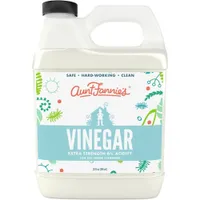Mistakes to avoid when washing whites – and what to do instead
Whites turning gray? These are the 10 things laundry experts never do


There is a moment in all of our lives when we realize our favorite white clothing piece is slowly dulling to gray. But why does this happen?
It turns out, there are some common mistakes we make when doing laundry that can degrade the color of our best wardrobe staples over time.
Here, laundry experts have explained 10 mistakes to avoid when washing whites and what to do instead.
Mistakes to avoid when washing whites
It turns out washing whites is not as straightforward as throwing them in a laundry pile and hoping for the best. Unlike dark or colored clothing, these pieces need a little more tender loving care.

1. Not spot-treating stains immediately
‘Starting off simple with an all-time obvious: remove the stains from your clothes before washing them,’ recommends Rebecca Wright, Product Technologist at M&S. ‘Though it may seem clear, not everyone thinks to do this before chucking a load in their washing machine and walking away.
‘If you’ve got the odd faint, mud-stained t-shirt and don’t pre-treat it, then it’s likely your garment should stay in good condition. But if you neglect deeper stains, such as removing wine stains, or removing coffee stains, your clothes are likely to be permanently soiled!’ she warns. ‘If not pre-treated, tough stains may not come clean from your clothes – so it’s important to assess what type of stain you have on your hands.
‘Start by separating the stained clothes and soaking them thoroughly, before applying washing detergent directly on the stain. Soaking them in vinegar and warm water will help bring out the stains further.’
Design expertise in your inbox – from inspiring decorating ideas and beautiful celebrity homes to practical gardening advice and shopping round-ups.
6% Distilled White Cleaning Vinegar | $11.99 at Amazon
This specially formulated white vinegar with cleaning strength at 6% acidity is perfect for cleaning all manner of things from around the home.
2. Not reading laundry labels
Although there are so many to keep track of, understanding laundry symbols is important for keeping your clothes and the best linen sheets in top condition.
To make it easier to remember, focus mainly on the temperature guide and tumble-drying symbols to get perfect whites.
3. Using the wrong setting
One of the most important laundry lessons to remember is what temperature to wash and which colors on, reminds Kathleen Bell, smol’s sustainable cleaning expert. A common cause of confusion (and sub-par whites) is not knowing whether to wash whites in hot or cold water.
‘I would avoid washing your whites with other colors and at higher temperatures as this can increase the likelihood of dyes running or bleeding,’ Kathleen explains. ‘Most detergents (like smol’s bio laundry capsules) work perfectly – and sometimes even better – at lower temperatures because anything too hot can denature the enzymes in them that break down stains. Washing at the right temperature not only helps keep your clothes looking better for longer but can also help you save on energy, too.’
As more of us try to save money on laundry, we may also be turning more to the eco setting on our washing machines. However, this may not always be a good idea for washing whites, suggests Sophie Lane, UK product training manager for Miele: ‘Although Eco mode washes clothes and linens just as well as any other laundry setting, in certain situations, intensive or special programs should be used.
'For instance, eco programs are not recommended when washing garments with the 'Gentle' or 'Hand-wash' care label or for woolens,’ she says. ‘These textiles require the use of special programs such as 'Delicates' or 'Woollens/Hand-care' in order to prevent damage and give fabrics the care they deserve. Similarly, certain stains and hygiene requirements demand the use of programs that wash a lot hotter.’
smol laundry tablets | subscriptions available at smol
The smol laundry capsules come in two types – bio (green) and non-bio (blue) – and they leave your clothes smelling clean, with no chemical scent. These also arrive in a cardboard box, similar to that of the dishwasher tablets.
4. Using too much detergent – or the wrong detergent
If your clothes continue to look dull, then cutting down on laundry detergent could do the trick. ‘Whether you prefer powders, gel or pods, using the right products for your clothes is another way to keep your clothes in tip-top shape for longer,’ explains Rebecca Wright of M&S. ‘With so many options available, it’s important to know how each one works.
‘Having too much detergent, in any form, can actually have a negative impact on your load of washing, as it can leave detergent residue – resulting in your favorite t-shirt becoming a scratchy, crunchy, discolored mess.’
5. Overfilling the washing machine
Overfilling a washing machine means that garments and linens are not given enough space to move around, are unevenly exposed to detergent and water, and are forced to endure more friction than a washing machine loaded to the correct level. The result? Dull whites that are difficult to get gleaming again.
What’s more, making sure to not overload your washing machine, and cleaning a washing machine between uses, can help not only get whites white again but prolong the lifespan of your appliance. Although your laundry pile may take a little longer to get through, it’s a win-win in the end!
6. Not turning clothes inside out
Although a rule typically applied to washing dark clothing to prevent fading, turning white clothing and bed sheets inside out before washing can help to protect the visible exterior from static and friction, preserving the appearance of the fabric for longer, experts suggest.
What’s more, washing clothing inside out allows the often dirtiest areas (i.e. areas that have been in contact with our bodies) to be washed first and take the brunt of detergents and softeners.
7. Tumble drying whites
According to some experts, white clothes and linens are some of the many things you should not put in a tumble dryer.
Keeping your whites looking bright and preventing graying doesn’t need to cost you anything! Line drying your clothes outside in the sun will help as the UV rays bleach clothing,’ explains Kathleen Bell, smol’s sustainable cleaning expert. ‘During a cold snap, hanging clothes by a window will have the same effect as using a heated airer or a dehumidifier.’
8. Not washing whites separately
Getting through laundry as quickly as possible is often high up on our priority list when checking off household chores, but leaving whites in with colors can quickly lead to ruined clothes.
‘Bright clothes are likely to have excess dye in them that may bleed into your lovely whites washing on the first few cycles. Also, if you plan on using bluing agents or bleach to keep your white clothes free from discoloration, it’s important to keep colors apart to avoid spotting or fading colors, says Rebecca Wright, product technologist at M&S. ‘If you do decide to take the risk, then I recommend using color catchers to avoid any cross over!’
9. Washing whites too frequently
‘Another easy method to prevent clothes from graying is simply to wash them less!’ suggests Smol’s Kathleen Bell. Before you rejoice at the idea of never doing laundry again, there are some exceptions to this ‘less-is-more rule.
‘Items like underwear or very sweaty gym clothes should still be washed regularly, but most of your clothes don’t need washing after one or even two wears. Shaking your clothes out when you take them off and leaving them hung up to air out overnight is a great way to get another wear out of an outfit and help keep whites looking white,’ Kathleen explains.
10. Not using a bleaching agent
Using bleach in laundry may sound scary but oftentimes you can use household products such as lemon juice in laundry to help brighten whites and keep them looking their best without chemicals.
‘Lemon juice is a natural disinfectant and will help to kill any bacteria that may be present on your clothing. It is also a natural bleaching agent, so it can help to brighten your laundry,’ says Bret Jackson, professional cleaning expert at Letti & Co. ‘Adding a bit of lemon juice to your laundry load will help your clothes stay bright and clean without damaging them as some chemical cleaners can. In addition, adding lemon juice to your laundry will prevent the growth of mold and mildew,’ he adds.
‘For clothes that do appear to be graying, a simple solution could be in your cupboard – baking soda is an easy way to brighten whites,’ continues Smol’s Kathleen Bell. ‘Mix one cup of baking soda mixed with five liters of warm water and leave your whites to soak overnight before washing as normal. Half a cup of baking soda can also be added straight to your washing machine’s drum if you don’t have the opportunity to soak your clothes overnight.’
What colors are okay to wash with whites?
If you want to get laundry done more quickly, then it is possible to wash whites with lightly colored clothing such as pastels and add a color catcher if you are at all concerned about running colors. You should always avoid washing whites with dark or bright colors, however. Even with a color catcher, saturated colors such as these will quickly lead to gray-toned whites.
Why do white clothes turn yellow?
There are a number of reasons why whites may turn yellow, but the most common causes are deodorants, sweat, or using too much laundry detergent. Luckily, it is easy to prevent this discoloration by using the correct whitening laundry products, or wearing a base layer underneath precious white clothing.

Chiana has been at Homes & Gardens for two years and is our resident 'queen' of non-toxic living. She spends most of her time producing content for the Solved section of the website, helping readers get the most out of their homes through clever decluttering, cleaning, and tidying tips. She was named one of Fixr's top home improvement journalists in 2024.

